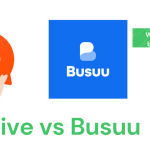Tagalog is one of the most exciting Asian languages to learn. It is unique yet shares similarities with languages like English, Spanish, and Chinese.
I think this is why many are interested in mastering the common Tagalog vocabulary and sentence structure. If you are one of them, you landed on the right post! Check out below to learn more about this awesome language.
About The Tagalog Language
In the past, Austronesian languages, including Tagalog, were widely spoken in the Philippines. This was before colonization by countries like Spain, Japan, and America.
But as time went by, the English language became one of the national and official languages of the Philippines, together with the Filipino language. Another thing is that Tagalog and English use the Latin alphabet. However, their pronunciation and structures can differ, while some similarities exist.
The Filipino people are known for their friendliness and hospitality, especially in the Asia Pacific region. Their greeting ‘Mabuhay!’ is a formal way of welcoming visitors and has an honorable and alluring tone. This is also why other beginners of the Tagalog language who visited the country are passionate about learning Tagalog. They want to use it to communicate with the locals in the Philippines. Thus, it is one of the most common Tagalog vocabulary you’ll hear when you’re visiting the Philippines.

What Are The Common Tagalog Vocabulary You Should Learn?
Do you want to impress the locals with your skills in Tagalog? Be sure to add these words to your basic sentences when conversing with the locals.
If we could give one tip, it would be to memorize some of these words. Doing so will help you instantly connect with Filipinos. Why? Simply because the locals appreciate it when you try to speak with them in a language close to their heart.
So, here are the common Tagalog vocabulary and familiar words used in the Philippines. Let’s start learning!
| English | Tagalog |
|---|---|
| I | Ako |
| This | Ito |
| Right | Kanan (Right direction), Tama (Correct) |
| Left | Kaliwa (Left direction), Naiwan (Left behind) |
| Goodbye | Paalam |
| Yes | Oo |
| No | Hindi |
| Want | Gusto |
| Correct | Tama (Right, Correct) |
| True | Totoo |
| Free | Libre (No cost), Malaya (Freedom) |
| Hand | Kamay |
| Need | Kailangan |
| Election | Eleksyon |
| Change | Pagbabago |
| Newspaper | Dyaryo |
| News | Balita |
| Thank You | Salamat |
| Teach | Magturo |
| Computer | Kompyuter |
| Read | Basahin |
| Book | Libro |
| Pencil | Lapis |
| Travel | Paglalakbay |
| Neighbor | Kapit-bahay |
| Kill | Pumatay |
| Act | Kumilos (Move, Act), Gawa (Deed, Act) |
| Example | Halimbawa |
| War | Digmaan |
| Dead | Patay |
| Afraid | Takot |
| Play | Maglaro (Play a game), Magpatugtog (Play a Music) |
| Slow | Mabagal |
| Loud | Malakas (High volume) |
| Large | Malaki (Big in size), Malaki (Big in a general sense) |
| Delicious | Masarap |
| Where | Saan |
| Smile | Ngiti |
| Love | Pag-ibig |
| Why | Bakit |
| How | Paano |
| When | Kailan |
| Fat | Taba (Fat, Chubby), Mataba (Fat person) |
| Hair | Buhok |
| Bank | Bangko |
| Money | Pera |
| Smell | Amoy (Noun), Maamoy (Adjective) |
| Road | Kalsada |
| Rain | Ulan |
| Bed | Kama |
| Eat | Kumain |
| Sugar | Asukal |
| Egg | Itlog |
| Bread | Tinapay |
| Milk | Gatas |
| Ice | Yelo |
| Heart | Puso |
| Blood | Dugo |
| Summer | Tag-araw |
| Buy | Bumili |
| Store | Tindahan |
| Ask | Magtanong |
| Run | Tumakbo |
| Write | Sulat (Noun), Sumulat (Verb) |
| Cool | Malamig (Temperature), Astig (Slang for “cool”) |
| Soil | Lupa (Soil, Land) |
| Winter | Taglamig |
| Climb | Umakyat |
| Hill | Burol (Hill, Funeral wake) |
| Glass | Salamin (Mirror, Glass) |
| Grass | Damo |
| Job | Trabaho |
| Class | Klase |
| Song | Kanta |
| Sound | Tunog |
| Visit | Pagbisita |
| Soft | Malambot |
| Fun | Saya, Kasayaan (Joy, Fun) |
| Million | Milyon |
| Rich | Mayaman (Wealthy, Affluent), Mataba (For soil: fertile, rich) |
| Plane | Eroplano |
| World | Mundo |
| Hat | Sumbrero |
| Truck | Trak |
| Nose | Ilong |
| Hear | Pakinggan (To listen intentionally), Marinig (To hear unintentionally) |
| Listen | Makinig |
| House | Bahay |
| Picture | Larawan (Photograph, Painting, Visual representation) |
| Us | Atin (Inclusive: you and me), Amin (Exclusive: we, but not you) |
| Self | Sarili |
| Near | Malapit |
| Sky | Langit |
| Pay | Bayaran (Payment), Magbayad (To pay) |
| Clock | Orasan |
| Radio | Radyo |
| Ring | Singsing (Ring), Tumunog (Sound, Ring) |
| Chair | Silya |
| Iron | Bakal (Iron, Metal) |
| Street | Kalye |
| Office | Opisina |
| Trip | Paglalakbay (Journey, Trip), Madapa (Stumble, Trip) |
| Flower | Bulaklak |
| Hope | Umaasa (Hoping), Pag-asa (Hope) |
| Place | Lugar |
| Where | Saan |
| Live | Mabuhay (Live, Long live) |
| After | Pagkatapos |
| Man | Tao (Person, Human being), Lalaking Tao (Male person), Lalaki (Male) |
| Came | Dumating |
| Good | Mabuti |
| Name | Pangalan |
| Very | Napaka, Sobra |
| Tired | Pagod |
You’re all set to start a conversation in Tagalog with these words and phrases. Remember, every bit of effort counts. So, keep practicing! Do you want more? Then, let’s go!

Other Tagalog Vocabulary: Essential Phrases
You know what? There are more essential Tagalog phrases that can enrich your conversations. These are the phrases Filipinos use in their day-to-day interactions. Here are some of them:
| English | Tagalog |
|---|---|
| Beautiful day | Magandang araw |
| Good morning | Magandang umaga |
| Good afternoon | Magandang hapon |
| Good evening | Magandang gabi |
| How are you? | Kamusta ka? |
| Please pass my payment to the driver | Pakiabot po ng bayad sa drayber |
| This is my Payment | Ito ang bayad ko |
| How much? | Magkano? |
| This is expensive! Can you give me a cheaper price? | Ang mahal naman! Pwede bang bigyan mo ako ng mas mababang presyo? |
| Have you eaten? | Kumain ka na? |
| I’m full | Busog na ako |
| I will just take a shower | Maliligo lang ako |
| It’s too hot outside | Sobrang init sa labas |
| I’m tired | Pagod na ako |
| I want it too | Gusto ko din |
| It’s time to go home | Oras na para umuwi sa bahay |
| Thank You | Salamat |
Time To Practice These Common Tagalog Words And Phrases With Ling!
Learning Tagalog with the Ling app is fun and easy. Why? This app is equipped with several language activities that help you understand common Tagalog phrases. Aside from that, the Ling app also teaches you simple sentence structure and grammar, pronunciation and fluency, meanings of a particular word, and other language-related skills.
You can learn those by answering interactive quizzes and flashcards. Also, the app has a fun chatbot feature to practice real-life conversations. What’s more, you can learn other countries’ different languages because the Ling app offers 60+ languages.
You can also explore other blog posts about your target language written by various native speakers. This includes topics like history, cultures, slang words and phrases, different parts of speech, famous clothing and foods, and others. You can also read several honest reviews and feedback concerning other language learning applications written by several language specialists.
Can’t wait to improve your language skills? Hurry and download the Ling app from the Play Store and App Store now! Learn the most common Tagalog vocabulary while having fun!













3 Responses
Sound for ‘kailangan’ is not functioning.
Sound for ‘eleksyon’ gives ‘kailangan’
Please correct it.
Hi John! Thank you so much for reading and your feedback is greatly appreciated. I’ve updated the sounds.
Hindi ako marunong mag English words